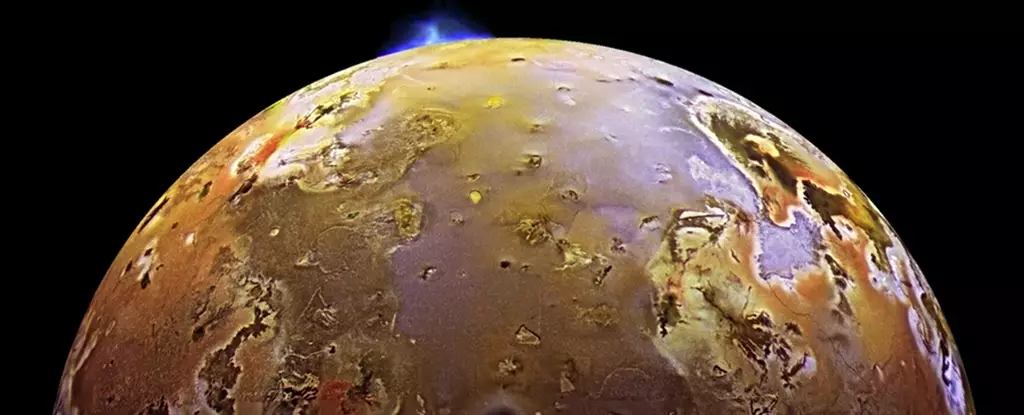The Large Binocular Telescope (LBT), nestled on Mount Graham in Arizona and overseen by the University of Arizona, stands as a beacon of innovation in the realm of astronomical observatories. Housing two primary mirrors each measuring 8.4 meters in diameter, the LBT boasts a collecting area that rivals that of a 30-meter telescope. Equipped with cutting-edge resolution capabilities, adaptive optics technology, and advanced instruments, ELTs like the LBT are poised to delve into the depths of the Universe, capturing breathtaking images of celestial marvels ranging from distant galaxies to objects within our Solar System.
In a groundbreaking feat, an international collaboration spearheaded by the University of Arizona harnessed the power of the LBT to capture the highest-resolution images ever recorded by a ground-based telescope of Jupiter’s moon Io. These extraordinary images unveiled surface features as minuscule as 80 kilometers in diameter, a level of spatial resolution that previously only spacecraft had been able to achieve. The momentous achievement was facilitated by the deployment of the LBT’s state-of-the-art instrument, SHARK-VIS, in conjunction with its adaptive optics system, showcasing the instrumental role of technological advancements in pushing the boundaries of astronomical observation.
The success of this pioneering endeavor can be attributed to the revolutionary capabilities of the SHARK-VIS instrument and the sophisticated adaptive optics system integrated into the LBT. A standout feature of SHARK-VIS is its high-contrast optical coronagraphic imaging design, developed and engineered at INAF-Osservatorio Astronomico di Roma. Leveraging the cutting-edge Single conjugated adaptive Optics Upgrade for LBT (SOUL), SHARK-VIS operates in tandem with the telescope’s near-infrared instrument, SHARK-NIR, to capitalize on the exceptional adaptive optics system of the LBT. Central to SHARK-VIS is its ultra-low-noise “fast imaging” camera, which adeptly captures slow-motion footage capable of freezing atmospheric distortions, elevating the quality of imaging data to unprecedented levels.
The meticulously processed images obtained through SHARK-VIS unveiled a major resurfacing event encircling Pele, one of Io’s prominent volcanoes positioned in the southern hemisphere near the equator. The resplendent image depicted a plume deposit enveloping Pele, blanketed by eruption residues originating from the neighboring volcano, Pillan Patera. This intricate visual narrative not only shed light on the volcanic dynamics of Io but also enabled scientists to glean insights into the resurfacing mechanisms at play, showcasing the transformative potential of ground-based observatories in unraveling the mysteries of distant worlds.
Io’s enigmatic volcanic landscape, intertwined with its celestial dance with Jupiter and its neighboring moons, offers a compelling avenue for probing the geophysical mechanisms that shape planetary bodies. Through vigilant monitoring of the volcanic activities on Io’s surface, researchers aim to decode the tidal heating processes fueling the moon’s intense volcanism, providing a window into the geological evolution of planetary bodies both within and beyond our Solar System. The comparative analysis of volcanic activity across diverse celestial bodies, such as Venus, Mars, and potential exoplanets, holds the promise of unraveling the underlying factors driving planetary volcanism and fostering a deeper understanding of habitability beyond Earth.
As the scientific community continues to push the boundaries of astronomical imaging capabilities, instruments like SHARK-VIS stand poised to revolutionize our exploration of the Solar System and beyond. With its razor-sharp resolution and unparalleled imaging prowess, SHARK-VIS is primed to spearhead a new era of discovery, enabling researchers to unravel the intricate tapestry of celestial phenomena scattered throughout our cosmic neighborhood. The potent combination of technological innovation and scientific ingenuity embodied by endeavors like the LBT’s imaging of Io serves as a testament to humanity’s insatiable curiosity and unwavering spirit of exploration.


Leave a Reply